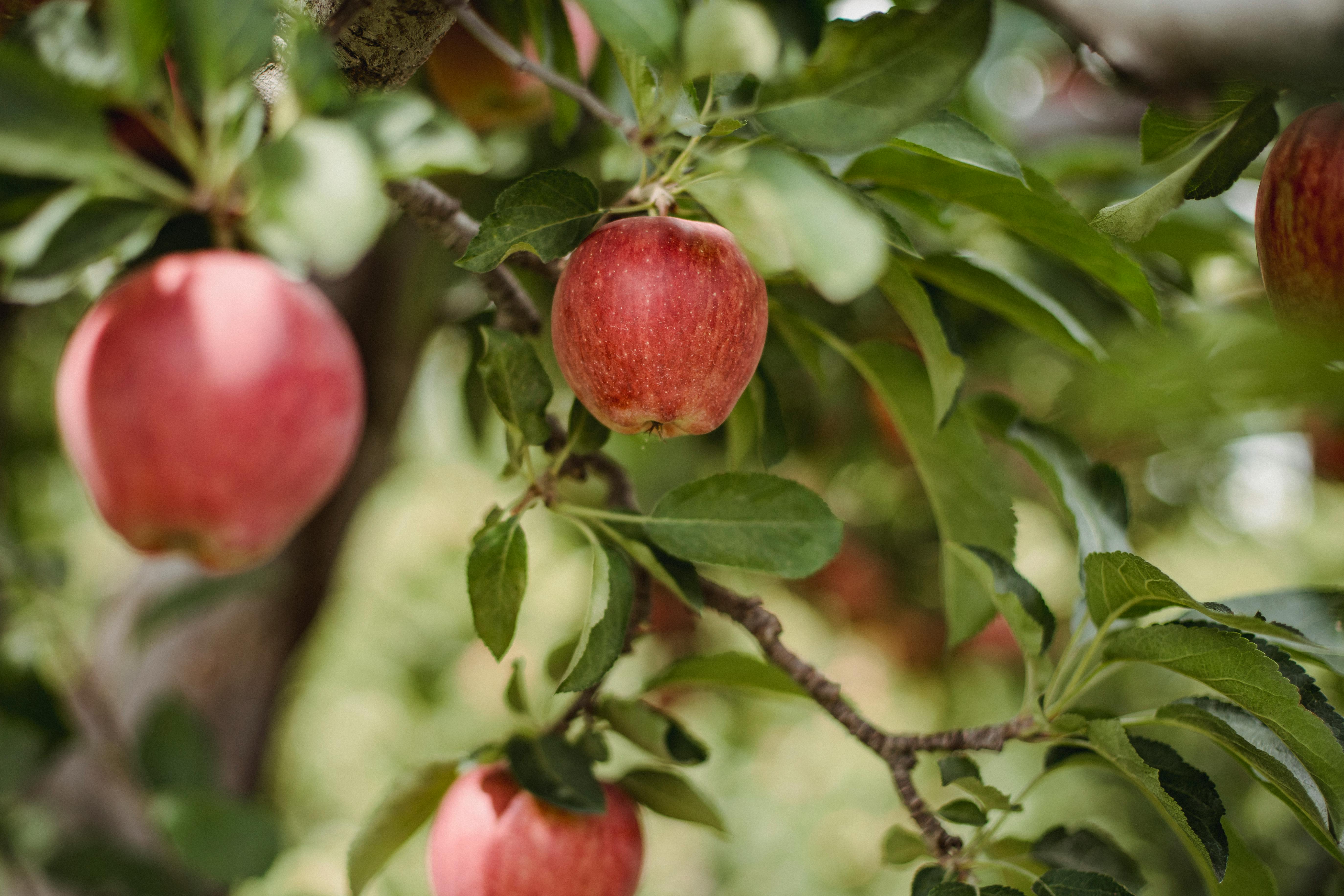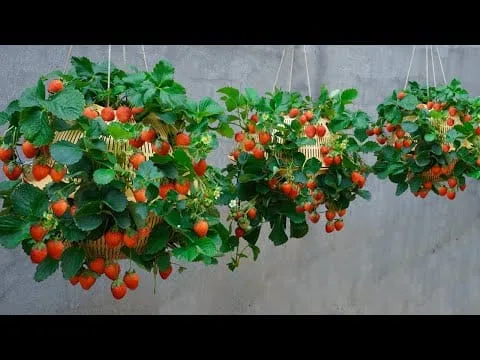Hanging strawberry plants is an easy and effective way to grow strawberries in a small space. Not only does it save garden space, but hanging strawberry plants can also make harvesting the sweet berries much easier. In this guide, we’ll provide step by step instructions on how to hang strawberry plants so you can begin growing your own delicious strawberries in no time.Hanging strawberry plants from a wall is a great way to save space and increase the amount of plants you can grow. Here are some steps to follow for successfully hanging strawberry plants from a wall:
1. Choose a sunny, sheltered spot on your wall for your strawberry planters.
2. Measure the area carefully and purchase planters that are slightly larger than the area you measured out. This will ensure that your planters fit securely against the wall.
3. Use screws to mount each planter securely against the wall, making sure they fit snugly against it.
4. Fill each planter with potting soil and add fertilizer as needed before planting your strawberry plants into them.
5. Water your plants regularly and provide support if needed (e.g., with trellises or other supports).
6. Enjoy your delicious, homegrown strawberries!
Hanging Baskets
If you want to grow strawberries in hanging baskets, you’ll need hanging baskets that are at least 12 inches in diameter. The baskets should be lined with sphagnum moss or coconut fiber to help retain moisture. Make sure you have drainage holes at the bottom of each basket and line them with a piece of cheesecloth before adding the soil.
Soil
Choose a potting soil mix that is designed for hanging baskets. The soil should be light and airy and contain compost, peat moss, perlite, and other organic materials to help retain moisture and provide nutrients for your plants. Make sure you use a fertilizer with slow-release nutrients so that the strawberry plants can get the right balance of nutrients throughout the growing season.
Support Structures
You’ll need some type of support structure to hang your strawberry plants. This could be a trellis, wire cage, or netting attached to an overhead structure such as a porch or deck railing. Make sure any support structures are sturdy enough to hold the weight of your hanging baskets when they’re full of soil and water.
Fertilizer
Fertilize your strawberry plants every few weeks during the growing season using an all-purpose fertilizer or one specifically designed for strawberries. Follow instructions on the package carefully so you don’t over-fertilize your plants.
Mulch
Spread mulch around your strawberry plants to help keep weeds away and retain moisture in the soil. Straw is often used as mulch for strawberries but any type of mulch will work as long as it doesn’t contain weed seeds.
Watering
Strawberry plants need plenty of water during their growing season, especially when they are flowering and bearing fruit. Water regularly, making sure not to let the soil dry out completely between waterings. If possible, use drip irrigation or soaker hoses so that only the roots are watered instead of splashing water on leaves which can lead to disease problems.<
Preparing the Plant
Before you hang your strawberry plants, you need to prepare them for the task. Start by removing any dead or diseased leaves and stems from the plants. Once all the unhealthy parts are removed, it’s time to begin potting. Use a mix of potting soil and peat moss, as this will help keep your plants moist and nourished. Once you’ve potted your plants, water them thoroughly and allow them to drain before hanging them up.
Choosing a Hanging Container
Once you have your strawberry plants ready to go, it’s time to choose a hanging container. Make sure you pick one that is large enough for your plant and don’t forget to factor in room for drainage. You can use any type of hanging container such as a basket, pot, or even an old tire. If using a basket or pot make sure it has drainage holes in the bottom so that excess water can escape.
Placing the Container
Where you place your hanging container is also important. Try to find an area that receives plenty of sunlight but isn’t too hot during the day. Also make sure that there is enough room around the container for air circulation so that your plants don’t become too hot or humid.
Securing the Plant
Once you have chosen where to hang your containers it is time to secure them in place. Use strong rope or wire to attach the containers securely onto whatever structure you are using such as a wooden beam or tree branch. Make sure there are no loose ends or gaps where animals could get in.
Watering and Fertilizing
To keep your strawberry plants healthy and happy they will need regular watering and fertilizing. Water your plants every few days depending on how much light they receive and add some fertilizer every month or two months depending on what type of fertilizer you are using.
Preparing the Wall for Hanging Strawberries
The wall where you plan to hang your strawberry plants needs to be prepared properly in order for them to thrive. First, ensure that the wall is sturdy enough to hold the weight of the plants and any potential fruit. Next, make sure the wall is clean and free of dirt or debris. Once the wall is ready, use a drill or screwdriver to attach a hanging basket bracket to the wall. Finally, add some potting soil to the hanging basket before securing it onto the bracket. Now your strawberry plants are ready for planting!
It is important to choose a location for your hanging strawberries that receives full sun throughout most of the day. This will ensure that your strawberries get enough light and warmth in order for them to produce abundant and healthy fruit. Additionally, make sure that there is adequate airflow around the plant so that it can dry quickly after watering or rain showers.
Finally, provide adequate water and fertilizer for your strawberry plants throughout their growing season. Water should be applied at least twice per week and fertilizer should be added every month or so. By following these steps you can ensure that your strawberry plants will thrive and produce delicious fruit!
Tips For Keeping Your Hanging Strawberry Plant Healthy
Growing strawberries in a hanging basket is a great way to save space and enjoy the delicious fruits. While it is relatively easy to take care of a hanging strawberry plant, there are some important tips to keep in mind. Here are some tips for keeping your hanging strawberry plant healthy:
Choose the Right Potting Mix
When planting your strawberries, you need to make sure you use the right type of potting mix. Look for a potting mix with good drainage that will keep the soil moist but not wet. Adding perlite or vermiculite will help with drainage and aeration.
Provide Plenty of Sunlight
Your hanging strawberry plant needs at least 6 hours of sunlight each day for optimal fruit production. If you live in a warm climate, provide your plants with some afternoon shade during the hottest parts of the day to prevent sunburn.
Water Regularly
Your hanging strawberry plant needs to be watered regularly so that the soil stays moist but not soggy. Aim to water your plants at least once or twice a week, depending on how hot it is outside and how dry the soil feels. Make sure you water directly onto the soil and avoid getting the leaves wet to prevent disease.
Feed Your Plants
Your hanging strawberry plants will benefit from regular fertilizing during their active growing season. Use an organic fertilizer that is high in nitrogen and potassium for best results. Apply fertilizer every few weeks during spring and summer and follow directions on the package for proper application rates.
Prune Your Plants
To keep your hanging strawberry plant healthy, it’s important to prune off any dead or diseased leaves or stems as needed throughout the growing season. Also, pinch off any flowers that appear during early spring so that all energy can be focused on producing strong roots and healthy foliage instead of producing fruit too early in the season.
Ensuring Proper Watering of Hanging Strawberries
Hanging strawberries are a great way to enjoy fresh fruit in the summer. They require a bit of extra care and attention to ensure they thrive and produce juicy, delicious berries. One of the most important aspects of caring for hanging strawberries is ensuring they are properly watered. Here are some tips for making sure your hanging strawberry plants get enough water:
First, check the soil moisture level often. Hanging strawberry plants need to be kept consistently moist but not overly saturated. Stick your finger in the soil up to the first knuckle; if it feels dry, it’s time to water. If it still feels damp from recent watering, wait another day or two before checking again.
Second, water your hanging strawberries in the morning or evening when temperatures are cooler and there is less wind to help avoid excessive evaporation. Use a watering can or hose with a nozzle attachment set to a gentle stream so you don’t knock off any flowers or disrupting any developing fruits.
Third, use an organic mulch such as straw or pine needles around the base of your hanging strawberry plants to help retain moisture and keep weeds at bay. Mulch also helps protect the shallow root systems from extreme temperatures and reduces damage from heavy rains.
Fourth, consider using a drip irrigation system if you have many hanging strawberry plants. This will help ensure they all receive an adequate amount of water without having to manually water each plant every day.
Finally, remember that during hot weather you may need to water more often than usual as hanging strawberry plants can dry out quickly when temperatures soar. With proper care and attention your hanging strawberry plants will reward you with delicious fruit all summer long!




